How to Prepare Your Vegetable Garden for Winter
This post may contain affiliate links, which means that I may receive a commission if you make a purchase using these links. As an Amazon Associate I earn from qualifying purchases.
Get your vegetable garden ready for winter with these practical tips. Clean up, enrich soil, plant garlic, and prepare beds for a strong spring start.
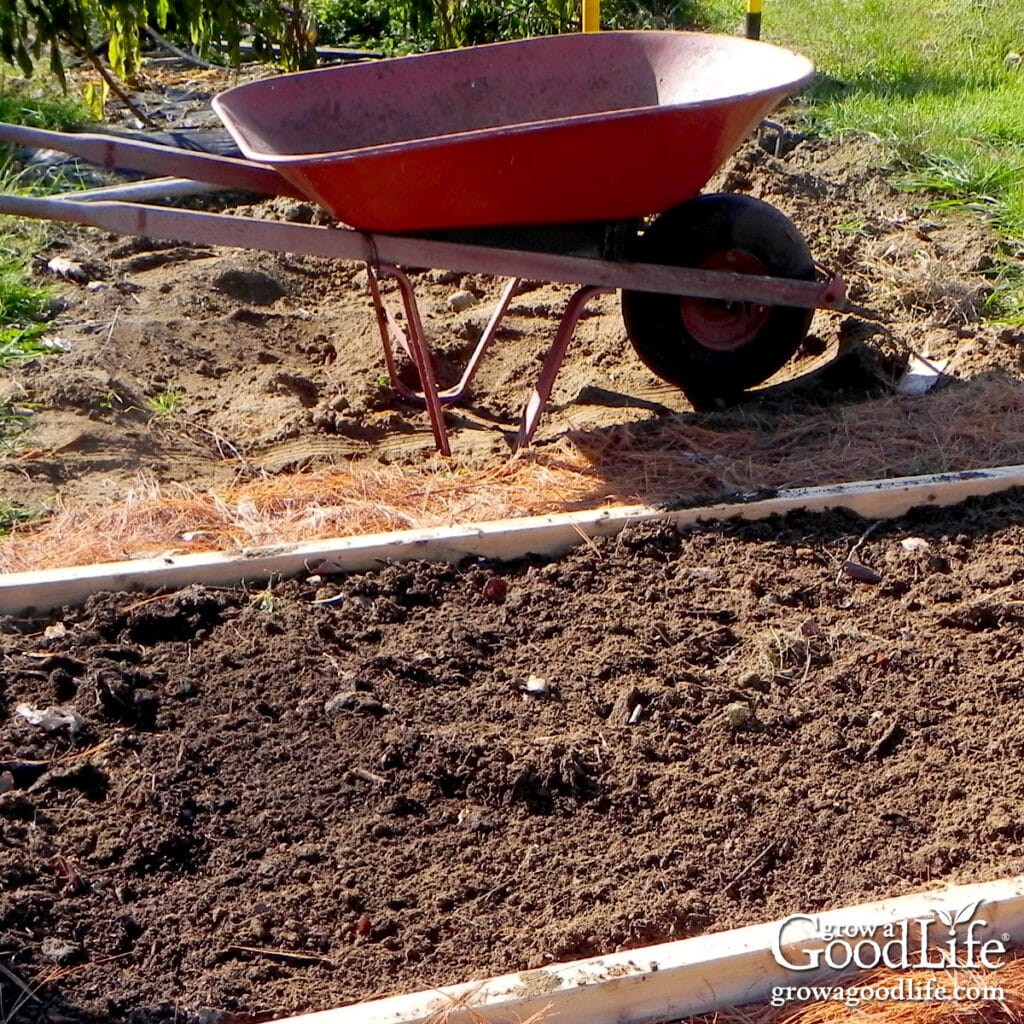
I have mixed emotions each autumn as the gardening season winds down. Since our growing season here in Maine is short, September often turns into a preserving marathon. Most of my time is spent in the kitchen trying to keep up with the avalanche of harvest bounty that seems to ripen all at once.
The vegetable garden gets very little attention during this time, except for daily walkthroughs to pick what’s ready. There’s no time for weeding, trimming, or assessing plant health. At that point in the season, the plants are on their own. They either succeed or they don’t.
By the time frost arrives in October, the garden is usually a tangled mess of dying plants, weeds, and rotting tomatoes. There will be no more tomatoes to process, except for those still ripening on the kitchen counter. There will also be no more cucumbers to pickle, string beans to can, or zucchini to shred and freeze.
Still, I’m filled with a deep sense of satisfaction each year as I fill the pantry with jars and the cellar with storage crops. This is the reward for all the effort spent nurturing, watering, and late-night canning throughout the growing season. This is why I garden.
When the major harvests wrap up, I’m both relieved and a little sad. But I always feel better once I get outside and start preparing the beds for winter.
Tips to Prepare Your Vegetable Garden for Winter
Here are some helpful tasks to tackle in fall that will protect your soil and set you up for a successful spring garden.
Clean Up Spent Plants and Garden Debris
The garden can feel like a daunting mess by the end of the season. But don’t let it overwhelm you. Break cleanup into manageable chunks and tackle one bed or section at a time.
- Remove all spent plants: Pull dead or dying crops, faded annual herbs, and rotting fruit and vegetables. Many pests and plant diseases, including Late Blight, can overwinter on foliage and fruit left in the garden. Remove all dead plant material and any rotten fruit or vegetables.
- Compost what’s healthy: If plants were disease-free, toss them in the compost. Most compost piles do not reach a high enough temperature to kill disease or fungus. So, if your plants are unhealthy with mildew, mold, or blight, dispose of the foliage with the household trash or burn it to avoid spreading it to your compost pile.
This simple cleanup step helps reduce overwintering pests and sets the stage for healthier beds in spring.
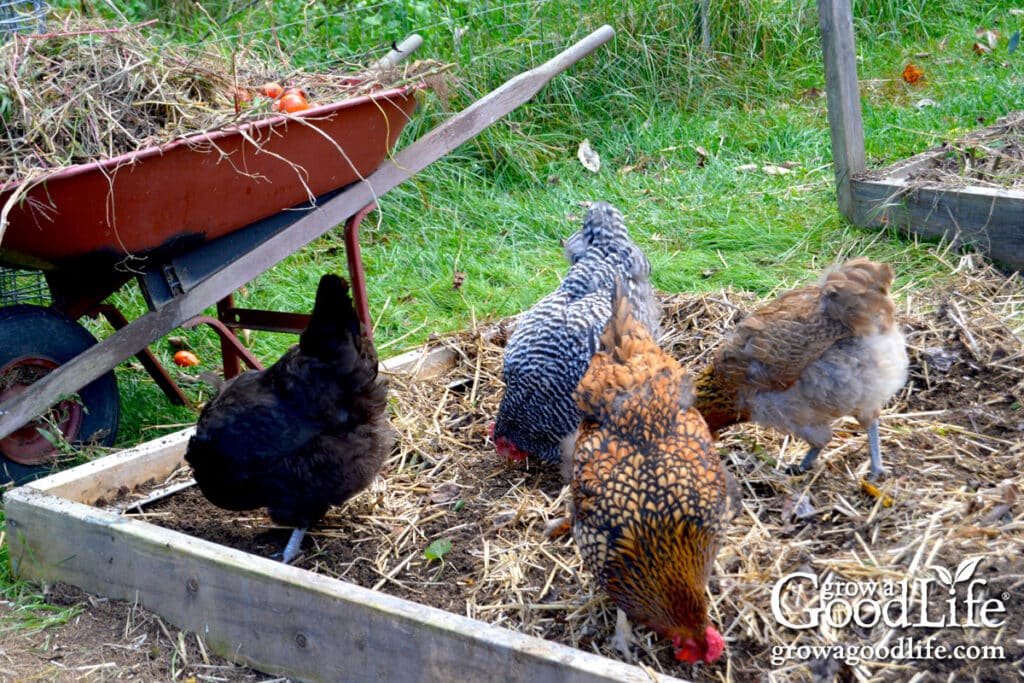
Feed the Soil with Compost and Mulch
Once your beds are cleared, gently push aside the existing mulch, remove any weeds, and replenish the soil with compost.
- Add compost: Top the soil with 2 to 3 inches of compost.
- Tuck beds in lightly: Then loosely cover with old mulch, such as straw or shredded leaves, to suppress late fall weeds and prevent erosion.
- Once the ground is frozen: Go back and add another layer of mulch, especially around garlic and perennials such as herbs and flowers.
Tip: Avoid heavy mulching right away. Many diseases and pests are killed when the soil freezes in winter. Mulching the beds too thickly could prevent the soil from freezing completely. Instead, add another layer of mulch after the ground freezes and the plants are dormant. Learn more about How Mulch Helps Your Garden.
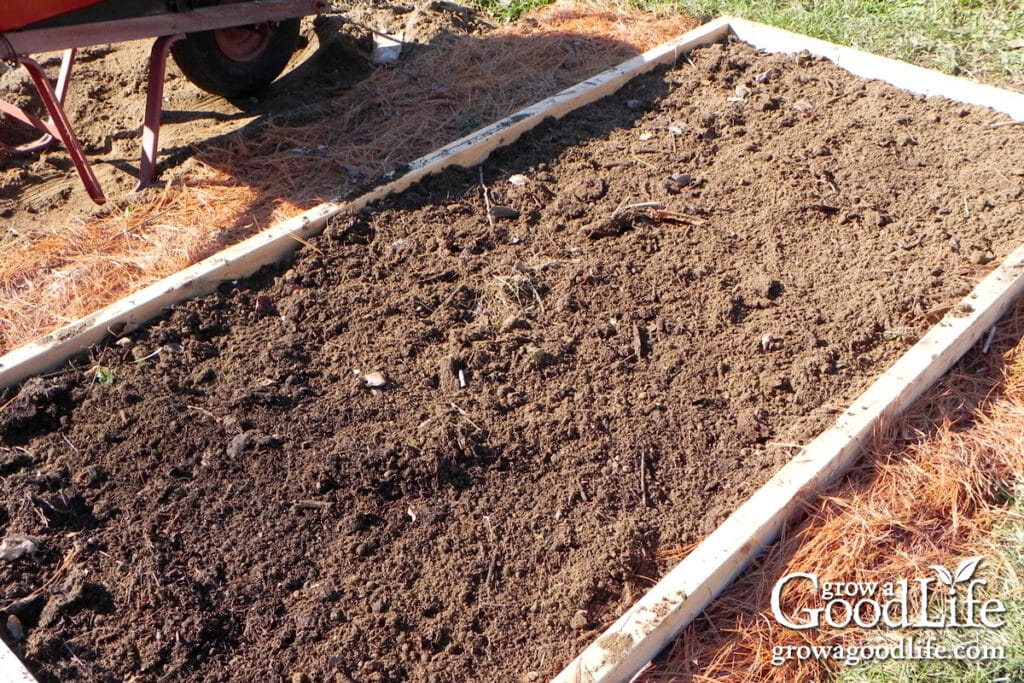
Test and Amend Your Soil
Fall is a great time to have a soil test done to determine if your soil would benefit from amendments to add nutrients and adjust the pH.
A basic soil test will show:
- Soil pH
- Levels of nutrients like potassium (K), phosphorus (P), calcium (Ca), magnesium (Mg), and sulfur (S)
- Organic matter content
- Presence of lead or other contaminants
Most state extension offices (Find yours here) offer affordable testing or can recommend a reputable lab.
The results will typically recommend the amount of lime and fertilizer (organic or chemical) to add to improve your soil. Lime is commonly used to adjust the soil pH. Fall is the perfect time to apply it because it takes time to break down and become available to your plants. Save other soil amendments, like fertilizers, for spring.
Tip: Be sure to keep a copy of your results and update your gardening journal so you can track the improvement in your soil year over year.
Plant Cover Crops to Protect and Enrich Soil
Cover crops are a simple way to protect your garden soil over winter while adding nutrients for spring. Sow quick-growing cover crops in early fall.
- Prevent soil erosion: Roots hold the soil in place during fall rains and spring snowmelt.
- Reduce compaction: Cover crops improve soil structure and keep the surface loose.
- Add organic matter: When tilled under or cut down in the spring, they naturally enrich the soil.
- Feed pollinators: Flowering cover crops, such as clover, provide nectar for late-season insects.
Some of the best options for home gardens include:
- Winter rye: Hardy and fast-growing, great for larger beds.
- Clover: Fixes nitrogen and improves soil fertility.
- Field peas or vetch: Adds nitrogen and breaks down quickly.
Tip: Plant cover crops about 4 to 6 weeks before your first hard frost so they have time to establish. In spring, cut them down before they flower and work them into the soil, or use them as mulch. Learn more: Tips for Planting Cover Crops.
Plant Garlic Before the Ground Freezes
Fall is garlic-planting time! Choose a bed that didn’t grow onions, leeks, or garlic this year, and prep it with compost and organic fertilizer.
- Plant cloves about 6 inches apart and 4 inches deep.
- Mulch lightly at planting time.
- Once the ground freezes, add a thick layer of mulch to insulate.
- Learn more: How to Plant Garlic in the Fall Garden.
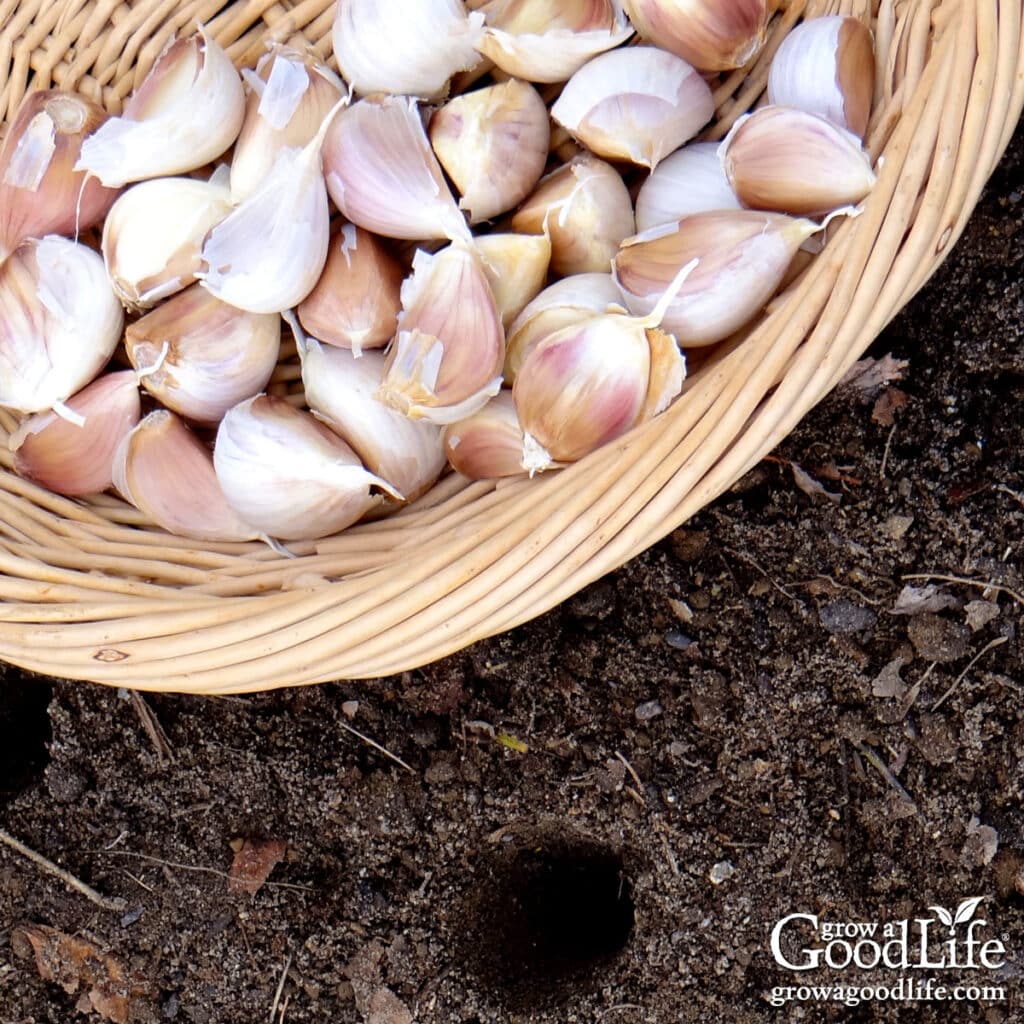
Expand Your Garden with New Beds
If you’re thinking about expanding your growing space, fall is an ideal time to do it. Consider building a few raised beds or square-foot gardens directly on top of the grass. Many garden centers have bagged organic garden soil and compost on sale in the fall.
- Build raised beds or square foot gardens right over grass or weeds.
- Fill with a mix of compost and soil while supplies are on sale.
- Add a layer of mulch to suppress weeds and protect the soil.
By spring, your beds will be settled and ready for planting. Learn How to Build a Square Foot Garden raised bed.
Gather and Use Fall Leaves in the Garden
Fall leaves are truly gardeners’ gold. I try to gather as many leaves as I can in the fall and fill up my compost bins or store them in garbage bags.
Here’s how I use them:
- Leaf Mulch: Shredded leaves make excellent mulch for garden beds. They suppress weeds, retain moisture, and break down slowly to feed the soil. Learn more: Leaf Mulch: How to Use Shredded Leaves in the Garden.
- Compost Ingredient: Leaves are the perfect “brown” (carbon) material to balance out kitchen scraps and other “green” (nitrogen) material in your compost bin. Learn How to Make Compost.
- Leaf Mold: Over time, a pile of leaves transforms into rich, earthy leaf mold, which is excellent for improving soil structure and moisture retention. Learn more: How to Make Leaf Mold to Improve Your Soil.
Tip: One of the easiest ways to gather and shred leaves is to use your lawn mower, either with a bagger or without. If you use a bagger, the mower will shred up a nice combination of grass and leaves that can be emptied into your compost bins.
Even if you don’t have a bagger on your mower, with some strategic mowing, you can direct the side discharge to gather the shredded leaves and grass into a pile. Then rake up the pile and fill your compost bin or store them in garbage bags.
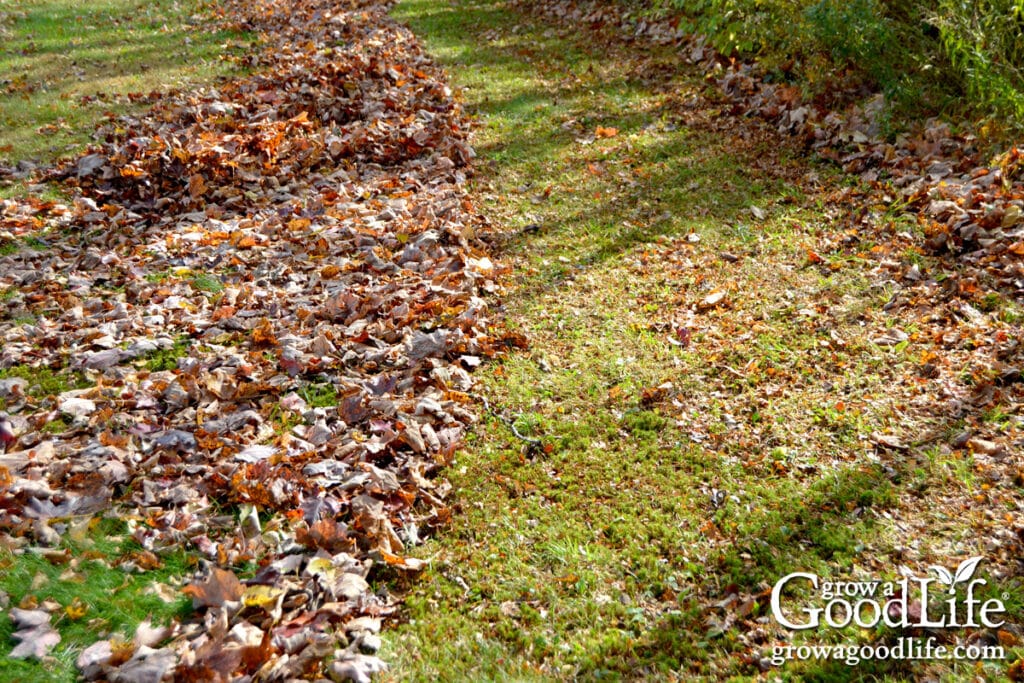
Reflect, Take Notes, and Plan Ahead
As you clean up, take a few moments to reflect on the season. Take notes on how many plants you grew, which varieties did well, and how much you harvested and preserved.
Jotting down these details now, while they are still fresh in your mind, will help you plan your vegetable garden for next year. It will also give you time to research solutions to problems you may have encountered.
Take notes on:
- What grew well?
- What didn’t?
- How much did you harvest?
- What pests did you have to deal with this year?
- Was there a garden bed that didn’t perform very well?
This info will be invaluable when you’re mapping out next year’s planting plan. A simple notebook works just fine, or use my tips here: How to Keep a Gardening Journal.
Bonus: Enjoy the Fall
End of season garden cleanup might not have the excitement of spring planting or the satisfaction of summer harvests, but it has a rhythm and beauty all its own.
Take time to enjoy the crisp, cool days of fall while working in the garden. No humidity certainly makes outdoor work more comfortable. Observe the beauty around you and the warmth of the sunlight. Take a deep breath and enjoy the fresh aroma of the soil. Soon, all will be covered with snow and frozen until spring.
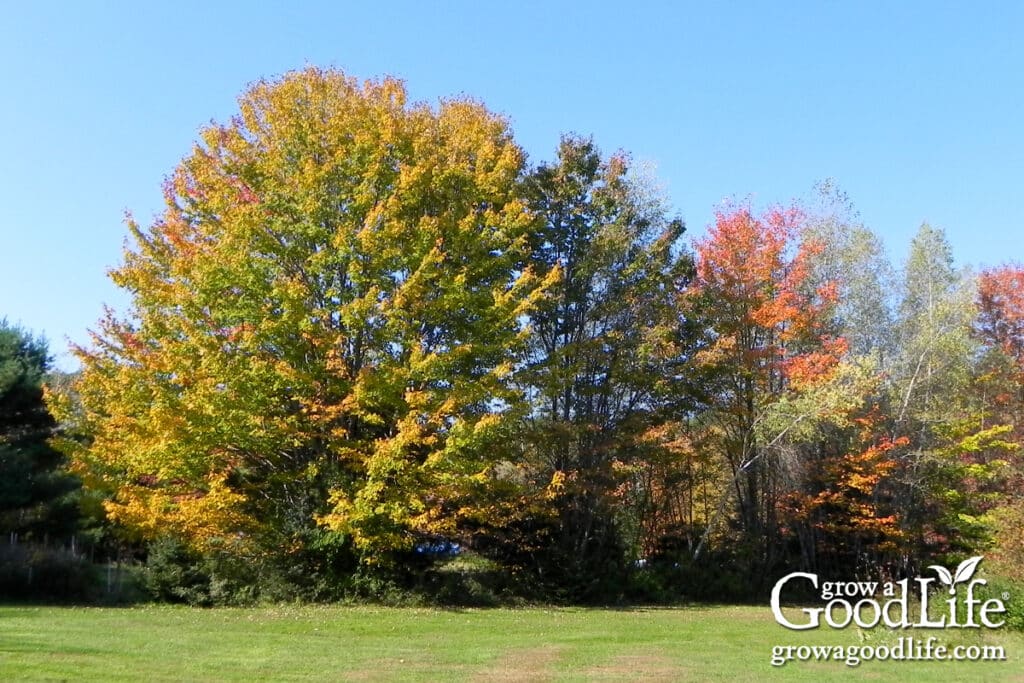
Tucking the Garden In for Winter
Taking the time to prepare your vegetable garden for winter is one of the best ways to set yourself up for success in spring. When the snow finally melts, your beds will be weed-free, enriched, and ready to plant.
Until then, cozy up with your notes, dream up next year’s garden, and rest easy knowing your soil is sleeping well beneath the mulch.
This article was originally published on October 2, 2015. It was updated on September 14, 2025 with additional tips and resources.

Helpful list, indeed! I am also a big fan of cover crops, as it’s such an easy and effective way to both protect and enrich the soil. My personal favourite fall cover crop is a mix of rye grass and crimson clover.
Cheers!
I plant a grow cover of oats on the beds that were harvested earlier in the fall. It helps to amend the soil. Oats are killed in the winter so you don’t need to cut them down in the spring.
Anna, Cover crops are wonderful for keeping the beds weed free and feeding the soil. Thanks for sharing.
Hi, Rachel. 🙂 Thank you so much for this post! I’m absorbing all the info I can on gardening so that I can get past my “black thumb” and hopefully one attain a “green thumb!” So the tips here are tremendously helpful.
Just to let you know (in case you didn’t receive ping), I selected this post as the featured one for this week’s Simply Natural Saturdays on my website. 🙂 Thanks again for sharing and I hope you have a blessed weekend!
Thank you TJ! I did miss the ping for some reason.
I’m reading through saying check, check, check 🙂 Great reminders!!!
Thanks for sharing on the Homestead Blog Hop. I hope we see you again today! Pinning!
Found you on Chicken Chick today. I’m sharing and pinning as a reminder to get it in gear this fall! I’m in Texas so the growing season will carry on until November or longer if I remember to keep things covered. Thanks for the great list!
Leilani, Thanks for stopping by and leaving a comment. I am still in the middle of garden cleanup and hope to get everything finished before the snow flies.
Great list of tips for winter. I’ve got the Fall garden growing pretty strong right now with the spring beds resting.
Great list. It’s the perfect time to get all these done. (Although one of these years, I should probably stop expanding the garden…)
Great tips here! My kids have decided that raking leaves is their favorite thing to do right now (score!). When we are done with the decorative jack o lantern bags they have filled, I will be dumping them on my raised beds.
What a GREAT list! I have been busy this week cleaning up my raised beds and compost area. Thanks for sharing it on today’s Blog Hop!
http://oursimplelife-sc.com/our-simple-homestead-blog-hop-21/
Thank you for sharing this helpful list on the Art of Home-Making Mondays! 🙂